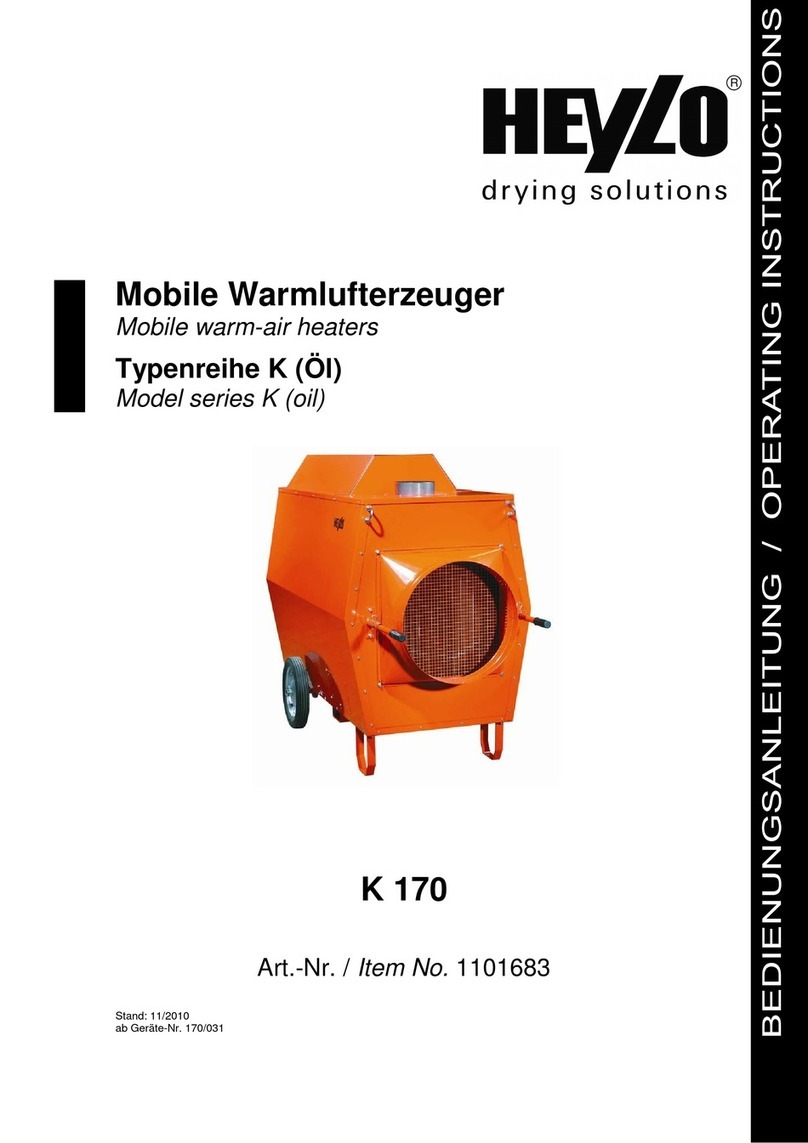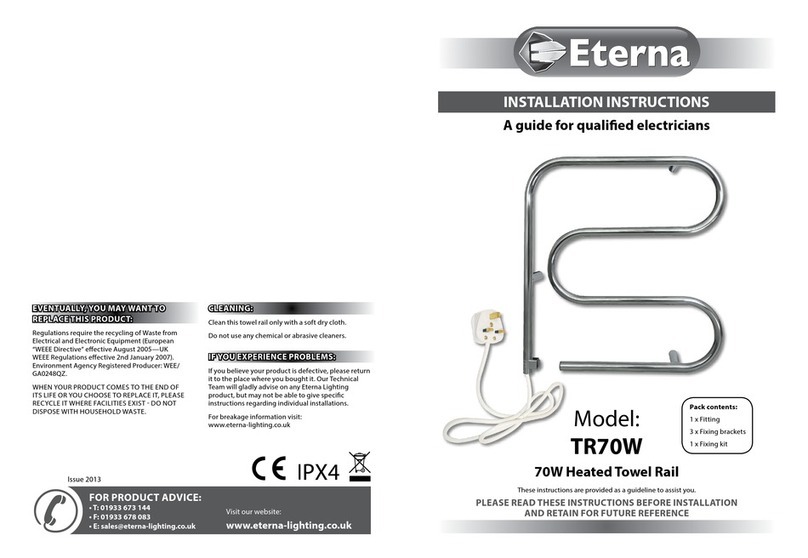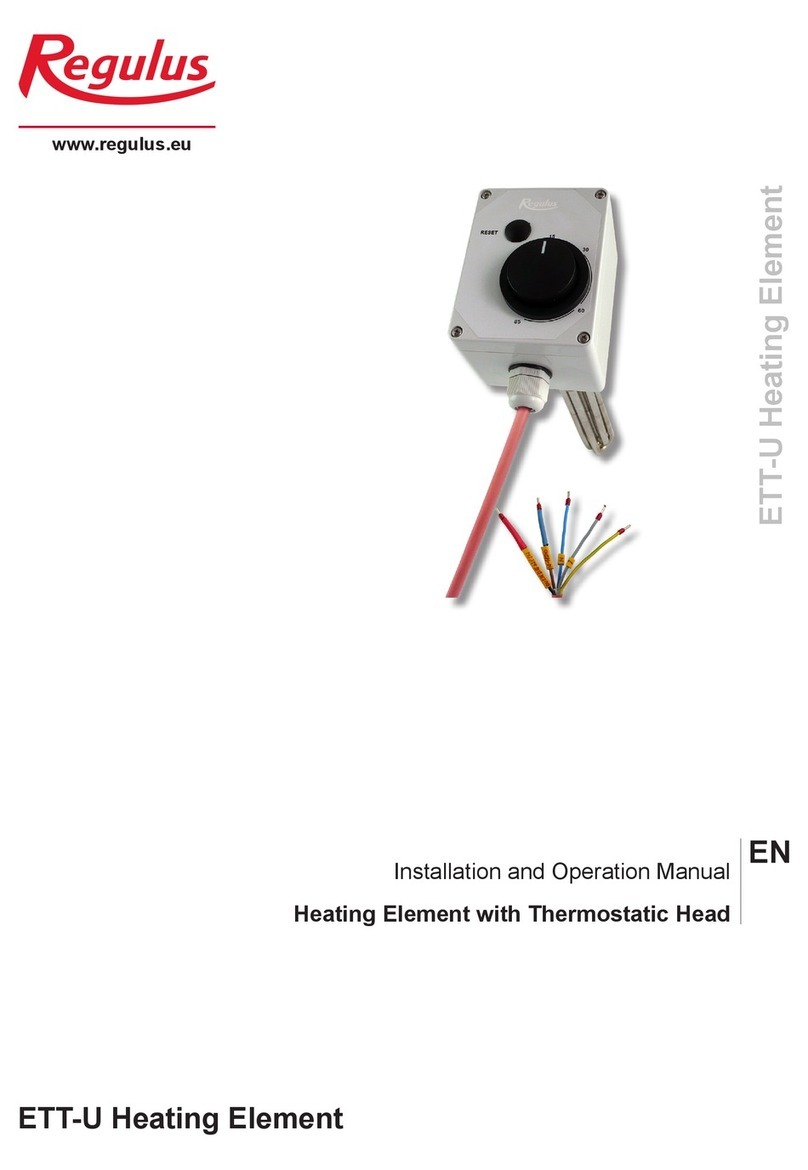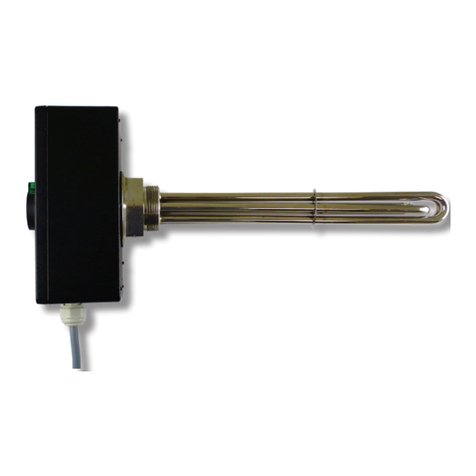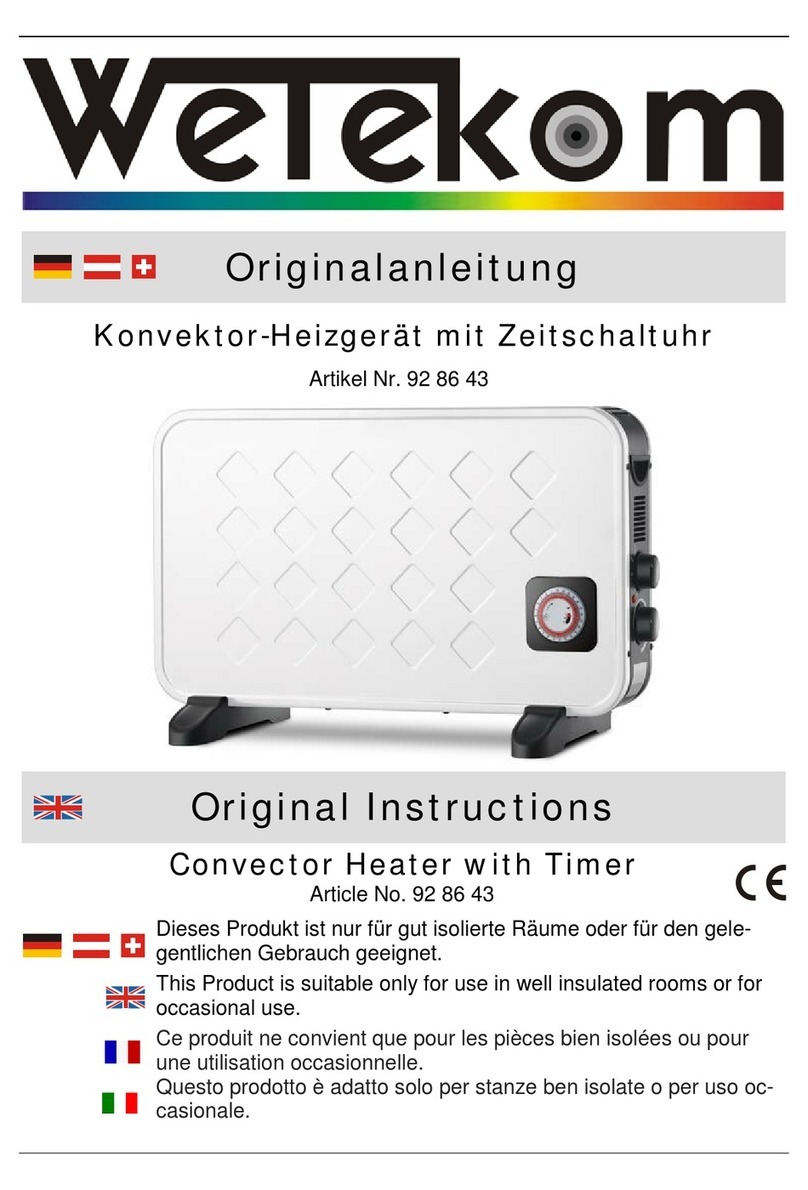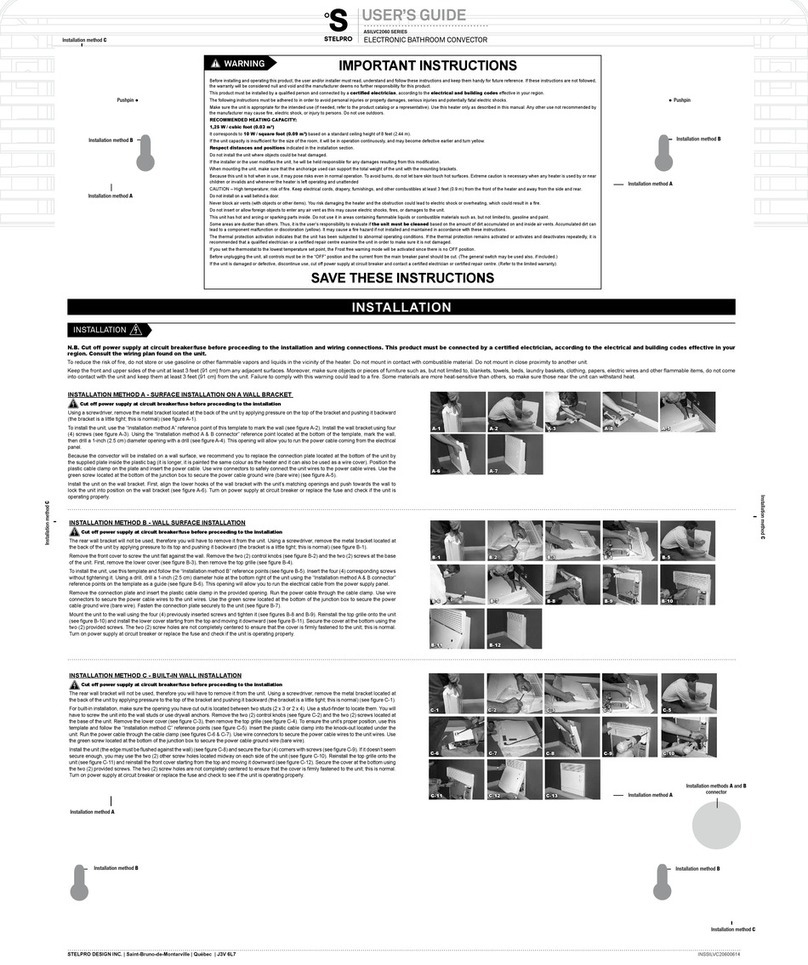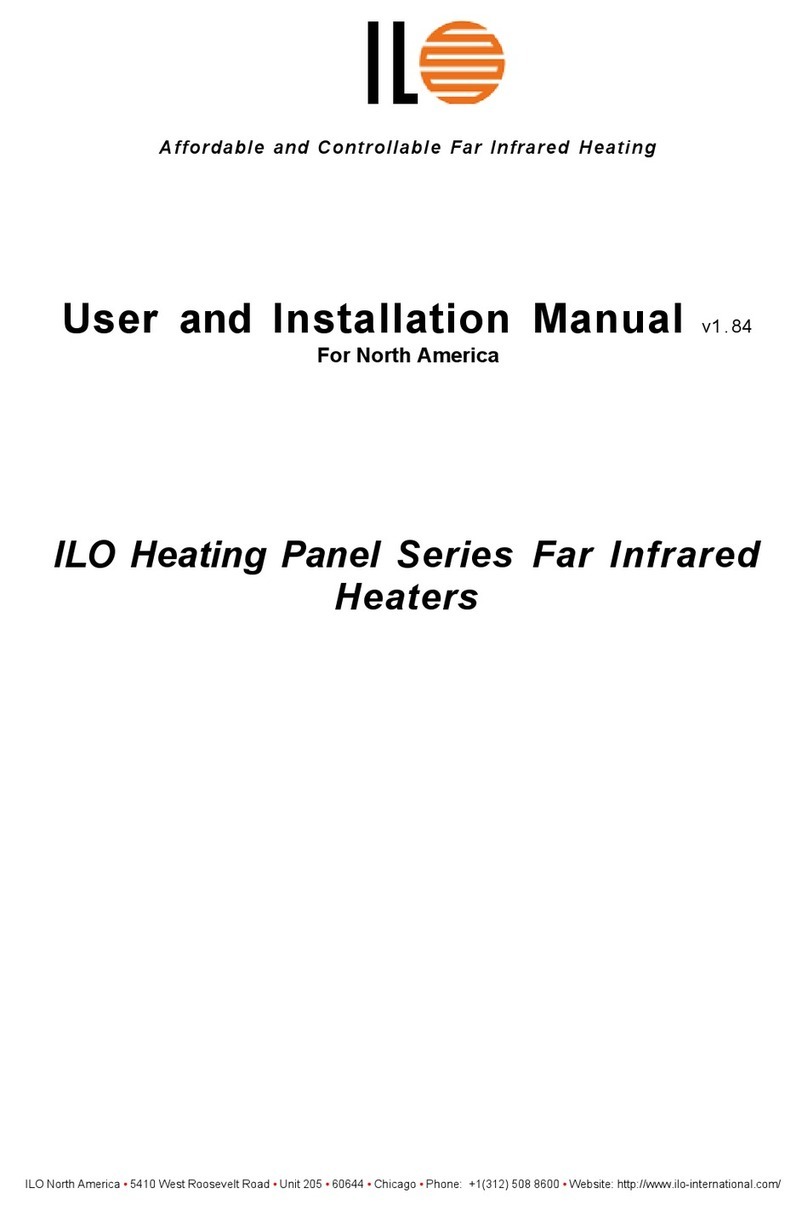
REGULUS - EL. heating element - www.regulus.eu
WEEE Registration Number:
02771/07-ECZ
2 - Heating Element without Thermostatic Head, fixed wiring,
nickel-plated, with G 6/4“ thread
2.1 - Technical Description
The electric heating element consists of a nickel-plated
heating rod with G 6/4“ M thread and a terminal strip.
2.2 - Dimensions
output
[kW]
el. wiring type no. code LN-non-hea-
ting end [mm]
L-heating rod
length [mm]
min. orage
w. heater size
min. tank size
3×230 V
(1×230 V)
2 (1) 3/N/PE AC 230 V ETT-A-2,0 8935 100 245 RBC 200 PS 200 HSK 500
3 (1) 3/N/PE AC 230 V ETT-A-3,0 8936 100 305 RBC 200 PS 200 HSK 500
4.5 (1) 3/N/PE AC 230 V ETT-A-4,5 8937 100 370 RBC 200 PS 200 HSK 500
6 (1) 3/N/PE AC 230 V ETT-A-6,0 8938 100 495 RBC 200 PS 200 HSK 500
3×400 V
7.5 3/N/PE AC 400 V ETT-A-7,5 8939 100 585 RBC 400 PS 300 HSK 500
9 3/N/PE AC 400 V ETT-A-9,0 8940 100 680 RBC 750 PS 500 HSK 800
12 3/N/PE AC 400 V ETT-A-12,0 8941 100 815 RBC 750 PS 800 HSK 800
IMPORTANT INFORMATION ON PROPER DISPOSAL OF E-WASTE AS REQUIRED BY THE EC DIRECTIVE
2002/96/EC (WEEE)
Do not dispose of this product as unsorted municipal waste. Please dispose of this product by
returning it to the point of sale or to your local municipal collection point for recycling. Respecting
these rules will help to preserve, protect and improve the quality of the environment, protect human
health and utilize natural resources prudently and rationally.
The crossed out wheeled bin with marking bar, printed ether in the Manual or on the product itself,
identifies that the product must be disposed of at a recycling collection site.
Instruction Manual
Heating Element without Thermostatic Head with fixed
wiring, nickel-plated, with G 6/4“ thread
1 - In General
1.1 - Use
This electric heating element is designed to heat sanitary water in a storage water heater or heating water in an
accumulation tank. It is not intended for fluid heating in stainless-steel electric boilers.
1.2 - Installation
Screw the heating element into the respective threaded sleeve (G 6/4” F) with the cable gland heading downwards. Sealing
cord, hemp, Teflon tape or a semi-permanent thread sealant should be used to avoid leaks.
Should the heating element be controlled by a temperature sensor, this sensor shall be placed in the tank, above the
heating element.
Should an electric heating rod be installed, plastic piping shall not be used for connecting the tank to a heating system.
1.3 - Maintenance
Clean the exterior of the heating element with a soft cloth and a suitable detergent. Never use abrasive cleaners or solvents.
If the element is used in extra hard water, it is recommended to remove sediments at least once a year. Unplug the element
before cleaning. Then drain water from the tank and dismount the heating element. Scratch the hard deposits on the
heating rod with a plastic or wooden spatula and flush with water. Be careful not to damage the protective nickel layer
on the heating rod. Then reinstall the body according to this instruction manual, fill the tank with water, air-bleed and
pressurize it. Check the threaded connection for leaks. Finally, re-connect the heating element to the mains.
1.4 - Disposal
75
L
LN
57








